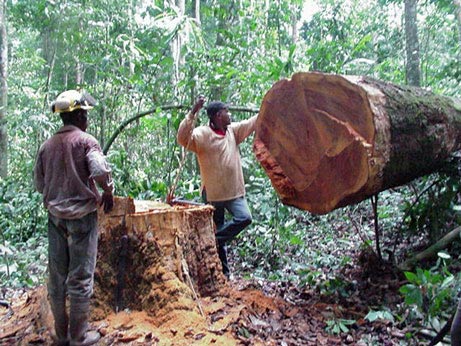
According to a U.N. atlas on Tuesday, the African continent is undergoing deforestation at double the world rate and its few glaciers are withering rapidly.
Satellite pictures exhibited thriving cities, pollution, deforestation and climate change were harming the African environment despite gleams of improvement in some areas.
According to a statement released by the U.N. Environment Programme (UNEP), prepared for a meeting of African environment ministers in Johannesburg, Africa is depleted of more than 4 million hectares of forest every year: twice the world’s average deforestation rate.
Photographs bore witness to recent scars in forests in countries including the Democratic Republic of Congo, Malawi, Nigeria and Rwanda. It said forest loss was the chief concern in 35 countries in Africa.
It also revealed that environmental change spread beyond the well-known shrinking of the snows on Mount Kilimanjaro in Tanzania, Africa’s highest peak at 5,895 meters (19,340 ft), or the drying up of Lake Chad.
On the Ugandan border with Democratic Republic of Congo, glaciers on the Rwenzori Mountains, where the highest peak is 5,109 meters, dwindled by half between 1987 and 2003.
Trees and shrubs had been cut from the Jebel Marra foothills in Sudan, partially due to inflow of refugees from the conflict in Darfur.
Said UNEP head Achim Steiner, in a statement,
The Atlas … clearly demonstrates the vulnerability of people in the region to forces often outside their control, including the shrinking of glaciers in Uganda and Tanzania and impacts on water supplies linked with climate change
The atlas said 300 million people confronted water scarcity and that areas in sub-Saharan Africa experiencing shortages were expected to increase by almost a third by 2050.
The statement reaffirmed that climate change is emerging as a driving force behind many of these problems.
Almost 200 governments have acceded to work out a new U.N. treaty by the end of 2009 to check climate change, caused mainly by greenhouse gas emissions from burning fossil fuels.
The atlas, however, added that there were marks of hope.
Steiner explained that there are many places across Africa where people have become active, where there are more trees than 30 years ago, where wetlands have flourished and where land degradation has been counteracted.
Among examples, the report indicated that action to forestall over-grazing had aided a national park in south-eastern Tunisia. A project to multiply wetlands in Mauritania was also helping to curb flooding and better livelihoods.
Source: enn
Image: cleanairgreentour




